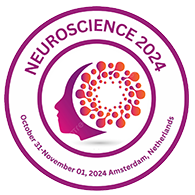36th World Neuroscience and Neurology Conferences
Amsterdam, Netherlands
Dr. Sama Rahnemayan
MD, Neurosciences Research Center, Tabriz University of Medical Sciences, Tabriz, Iran.
Title: Neural Roadmap of Positive, Negative, and Neutral Mood Induction impact on Driving Behavior Using fMRI
Biography
Biography: Dr. Sama Rahnemayan
Abstract
Introduction: The correlation between cognitive function, different mood states and their effect on driving behavior is complex and still remains unclear. This association has been in previous cases, studied only by subjective methods, which depend on individual differences and are therefore prone to biases. Here, we aimed to explore the relationship between driving behavior and mood, by functional magnetic resonance imaging (fMRI).
Methods: In a cross-sectional design, 28 male right-handed drivers, aged between 20 to 30 years were randomly selected and included in the study. Each participant drove virtually in an fMRI compatible driving simulator, after auditory and visual induction of positive, negative and neutral mood; and fMRI was performed during driving to explore driving-related brain activity alterations, and the impact of mood state on these effects. Statistical analysis was performed using SPM software by performing seed based connectivity analysis, after preprocessing steps.
Results: Comparing positive and neutral mood driving, decreased connectivity was found between medial prefrontal cortex (mPFC) and anterior prefrontal cortex (aPFC) and right dorsal anterior cingulate cortex (ACC) in positive mood, while increased connectivity was observed in the OFC and parts of aPFC and dorsal ACC. Comparing negative and neutral mood driving, decreased connectivity in extensive bilateral aPFC regions was seen in negative mood, whereas increased connectivity was found in bilateral aPFC, orbitofrontal cortex (OFC), and some left aPFC regions.
Conclusion: The observed patterns of brain activity and functional connectivity provide insights into the neural mechanisms underlying mood-induced driving behaviors and their potential impact on car accidents. The findings suggest that positive and negative mood states can affect driving behavior through distinct neurocognitive processes related to cognitive control, emotion regulation, and attentional mechanisms. Further research and the development of targeted interventions are necessary to leverage these findings in promoting safer driving practices and reducing accident risk.

